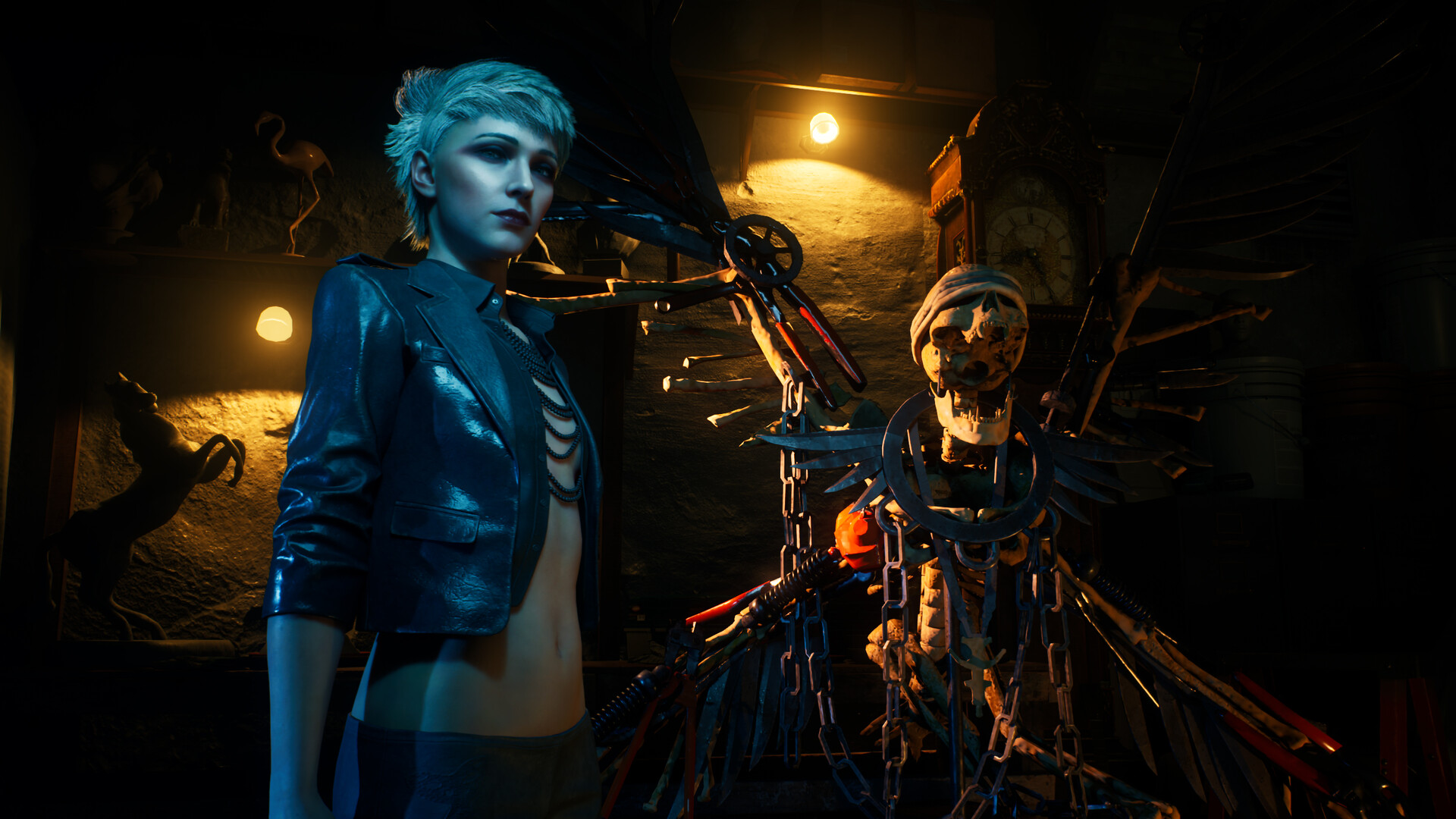Zagorath
Formerly /u/Zagorath on the alien site.
- 48 Posts
- 1.58K Comments

 191·4 days ago
191·4 days agoSoftware very rarely has an individual’s vision behind it in the same way movies do. At least publicly. There are a small handful of game developers you could say that about, but outside of games the only time a single creator’s vision is relevant in that way is when they also do have creative control over it, and so the need for such a pseudonym doesn’t exist.

 10·5 days ago
10·5 days agoTranscription
The “It’s an Older Meme, But It Checks Out” meme, featuring an image of an Imperial officer from Star Wars, with the caption:
It’s an older branch, sir
But it checks out

 91·5 days ago
91·5 days agoI usually create new repos through GitHub or another central repo’s system, where it defaults to calling the main branch
main. But I did recently create a new repo with my local Git’sgit init, and had to deal with amasterbranch on a completely new repo for the first time in a while. It was actually kinda a weird experience.
You’ve gotten a more full answer, so I’ll elaborate on the “bat and ball” example I mentioned elsewhere. There’s a famous puzzle: a bat and ball together cost $1.10. The bat costs $1 more than the ball. How much does the ball cost?
System 1 thinking results in the answer $0.10. Because $0.10 + $1 = $1.00. But the correct answer, which can only be arrived at in system 2, is $0.05, because the question isn’t actually about $1.10 - $1.00, but x+(x+1)=1.1. That’s not a problem system 1 thinking can do though.
You obviously do. It’s a pretty similar example to the classic ball & bat problem. It’s not hard maths, but system 1 basically doesn’t use maths at all. It’s pure instinct.
Transcription
White text on a teal background:
Guys I have bad news.
550 ÷ 2 is not 225.
The joke is that system 1 thinking is not as accurate as system 2 thinking.
 6·6 days ago
6·6 days agoWhile some “nonsense lawsuits” do happen, there is a very strong extent to which the notion of “nonsense lawsuits” being an epidemic in America is pro-corporate propaganda. Designed to get people to side with the big guy over the little guy who was wronged by them.
Take the infamous McDonald’s coffee lawsuit, for example. The woman in question received third-degree burns. Coffee, the normal way it’s served hot, does not do that. Maccas was serving it overly hot. They had even received multiple reports of it being a problem ahead of time. And the woman initially only wanted them to pay for her medical bills. When they refused prior to the lawsuit, she sued. They again refused the offer of medical bills during settlement negotiations, and she rightly won big. Maccas’ negligence caused serious harm, and it’s right that they were stung for it.

 3·24 days ago
3·24 days agoMy take is that everyone does it for their own posts, it’s not actually that much effort. And it’s an amount of effort that’s worth it, to make the threadiverse a more welcoming and accessible place. If even one post I transcribe is seen by one blind or vision-impaired user, I’ll consider the work worth it.
The fediverse broadly is already far better for accessibility than sites like Reddit and Twitter, with users in general far more likely to be aware of things they can do to promote access for users with special needs. But we can still do better, especially our threadiverse corner of the fediverse. Considering one of the reasons for outrage over Reddit dumping their API was the impact on users of blind-focused third-party apps, that’s particularly disappointing.
Transcription
U get $500 Million cash …
but u can’t use the guy rowing boat emoji for 2 Days
Would u do it ??
[A picture of a chat box with nothing in it but the ‘man rowing boat’ emoji with medium-light skin tone. 🚣🏼♂️]
That’s a pretty good point. For these standard template memes I usually go to Know Your Meme and copy/paste the relevant section of their description. In this case it looks like they said “also landing on it”, which I think is supposed to get across the same idea, but it does seem easy to read that without getting the intended idea.

 4·25 days ago
4·25 days agoMy ideal hope is that by modelling good behaviour, I can encourage more OPs to provide transcriptions themselves in the body or the alt-text field.
If OPs take my transcriptions and edit it into the body, that’s pretty good too. Especially if more people take up the work so transcriptions get posted on posts that I don’t do myself.
The algorithm is far too fickle for me to have even considered my comment getting upvoted to the top. Good if it happens I guess, but not in my consideration.

 3·25 days ago
3·25 days agoYeah, it’s much, much better if OPs provide their own transcription. It’s much easier to see that way. Mastodon and Pixelfed both basically yell at you if you don’t do it, and it’s a shame that Lemmy isn’t the same.
For small transcriptions, there’s an “alt text” field in the post itself, and for longer ones, they can be placed into the body of the post.
Transcription
When you accept him as gay, the hair, makeup, ballroom, and Liberace-themed decorations suddenly makes a lot more sense.
[A picture of Trump and Zelensky meeting in the Oval Office, in a wide photo showing the background filled with an ornately-decorated background including portraits of former US Presidents in gold-trimmed frames, a fireplace with many ornate golden trophies displayed on the mantelpiece, and other bright gold decorations.]

 65·25 days ago
65·25 days agoInterestingly, the earliest example of this meme listed on Know Your Meme is “junior react developer”, “senior react developer”. So this meme seems to have come full circle.

 11·25 days ago
11·25 days agoTranscription
The stepping vs jumping on a rake meme, showing a stock image render of a person stepping on a rake and having it smack them in the face on top, and an image of a man doing a skateboard trick with a rake below, also landing on it.
The man stepping on a rake is captioned “programming for the first time”.
The man performing a trick with the rake is captioned “programming for the hundredth time”.

 31·27 days ago
31·27 days agoAge of Empires is a bit different, because I don’t think they’ve moved the same game around between different studios in the midst of development. ES got shut down in 2009, with all existing Age of Empires games having long since ceased development. Then in 2013 Microsoft decided to release an HD remaster of the 1999 Age of Empires 2, and they brought Hidden Path on to do that. And then with the 2019 Definitive Edition they brought on board Forgotten Empires (who had also developed the official expansions in HD). The new development team in each case was being brought on to create a completely new release.
The KSP2 and Bloodlines 2 examples above both involved unreleased in-development games being given by the publisher to a different development team, and Skylines 2 is a still-supported game being given a different developer for future updates.

 5·27 days ago
5·27 days agoBloodlines 2 came to my mind. And it even has the same publisher as Skylines.
Transcription
A picture of a young Donald Trump shaking hands with Nancy Reagan, with Ronald Reagan in the background. It is titled
game recognize game















@non_burglar@lemmy.world is correct, but is perhaps not explaining it perfectly for the practical questions you seem to be asking.
If you have, say, two Docker containers for two different web servers (maybe one’s for your Wiki, and the other is for your portfolio site), you can have both listening on ports 80 and 443 of their container, but a third Docker container running a reverse proxy which has access to your machine’s ports 80 and 443. It then looks at the incoming request and decides which container to route the request to (e.g., http://192.168.1.2/wiki/%s requests go to the Wiki container, and all other requests go to portfolio site).
Now, reverse proxies can be run without Docker, but the isolation Docker adds makes it all a lot easier to manage, in part because you don’t need to configure loads of different ports.